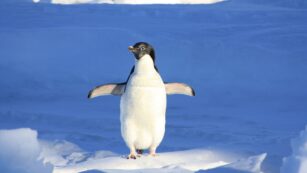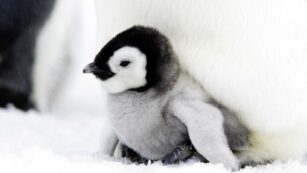
Drawing penguins can be a delightful journey into the world of art, mental health and creativity. These charming creatures, with their distinctive black and white plumage and endearing waddle, have captured the hearts of many. Whether you’re an aspiring artist or just looking to explore a new hobby, learning to draw penguins offers a fun and rewarding experience.
The process of drawing penguins allows artists to experiment with shapes and textures, capturing the essence of these fascinating birds. From the smooth curves of their bodies to the intricate details of their feathers, each stroke brings you closer to mastering the art of penguin illustration. This guide will provide you with essential tips and techniques to help you create your own captivating penguin drawings.
Embrace the challenge and let your creativity soar as you embark on this artistic adventure. With practice and patience, anyone can learn to draw penguins with confidence and flair.
Drawing:w1epl5fltma= Penguin
 Penguins captivate the imagination with their unique appearance, making them a popular subject for artists. Beginners and seasoned artists alike find joy in sketching these charming creatures. Drawing penguins offers a chance to play with different shapes and line techniques due to their distinct characteristics.
Penguins captivate the imagination with their unique appearance, making them a popular subject for artists. Beginners and seasoned artists alike find joy in sketching these charming creatures. Drawing penguins offers a chance to play with different shapes and line techniques due to their distinct characteristics.
Study penguin anatomy for accuracy. Understanding basic features such as their sleek bodies, beady eyes, and flipper-shaped wings aids in creating realistic drawings. Examine various penguin species to capture their diverse sizes and markings.
Explore different drawing tools. Pencils, charcoal, and markers each provide unique textures, allowing experimentation with light and shadow. Varying line thickness enhances depth and dimension in penguin illustrations.
Use references as guides. Photography books, online galleries, and nature documentaries supply valuable visual information. References help identify specific anatomical details, improving the quality of penguin sketches.
Embrace creative expression. Stylization offers flexibility in showcasing distinct artistic styles while drawing penguins. Experiment with abstract interpretations or focus on detailed realism according to personal preference.
Tools and Materials Needed
Essential Drawing Tools
-
 Pencils: Graphite pencils, including HB, 2B, and 4B, provide a range of shades. They allow fine details and shading.
Pencils: Graphite pencils, including HB, 2B, and 4B, provide a range of shades. They allow fine details and shading. -
Erasers: Kneaded and rubber erasers help refine lines and create highlights. They offer precision in adjustments.
-
Sharpener: A good sharpener maintains pencil points, ensuring consistency and fineness in strokes.
-
Ink Pens: Fineliners and pens are ideal for outlining and adding contrast. They bring precision and definition to drawings.
-
 Charcoal Sticks: Charcoal adds depth and texture, perfect for capturing penguin feathers and shadows.
Charcoal Sticks: Charcoal adds depth and texture, perfect for capturing penguin feathers and shadows. -
Blending Tools: Stumps and tortillons blend different shades. They create smooth transitions and nuanced tones.
-
Markers: Alcohol-based markers provide intense colors and depth. They’re useful for adding vibrant details.
-
Paper: Choosing the right paper, such as sketch pads or bristol board, affects texture and finish. Each offers unique qualities for different effects.
These tools and materials contribute significantly to producing professional and visually compelling penguin illustrations.
Step-by-Step Guide to Drawing W1EPL5FL TMA Penguin
Sketching the Outline
 Begin by establishing the basic proportions of the TMA penguin using light pencil strokes. Draw an oval for the body, a slightly smaller one for the head, and connect them with gentle curves for the neck. Sketch triangular shapes for the beak and flippers, ensuring they’re proportionate to the body. Maintain symmetry and balance by checking the alignment of the shapes from different angles.
Begin by establishing the basic proportions of the TMA penguin using light pencil strokes. Draw an oval for the body, a slightly smaller one for the head, and connect them with gentle curves for the neck. Sketch triangular shapes for the beak and flippers, ensuring they’re proportionate to the body. Maintain symmetry and balance by checking the alignment of the shapes from different angles.
Once the outline is set, focus on refining the specific characteristics of the W1EPL5FL TMA penguin. Add details like the eyes, using small circles, and introduce texture to the beak. Include feather patterns along the body by drawing soft, curved lines. Define the flippers with careful attention to their natural position and structure, ensuring they appear flexible yet sturdy. Enhance the feet by sketching webbed toes at the penguin’s base.
Shading Techniques
Apply shading to bring depth and dimension to the penguin illustration. Use various graphite pencils to create contrast between light and shadow. Focus on areas that naturally cast shadows, like under the flippers and around the neck. Utilize blending tools to smooth transitions and maintain realism. Experiment with charcoal for deeper areas and ink pens for distinct outlines, achieving a layered and dynamic visual effect.
